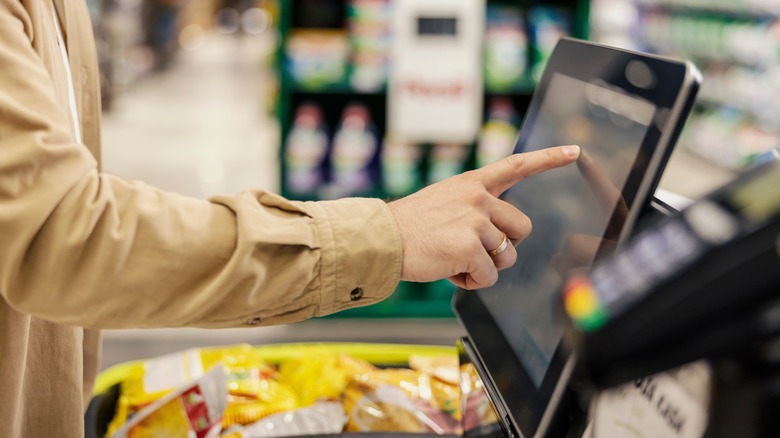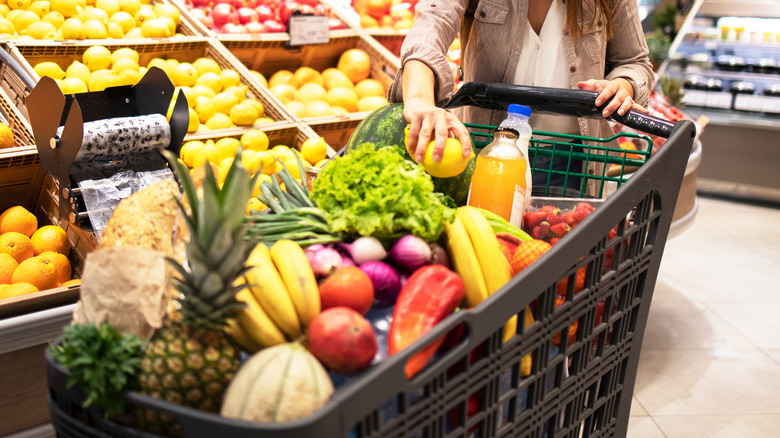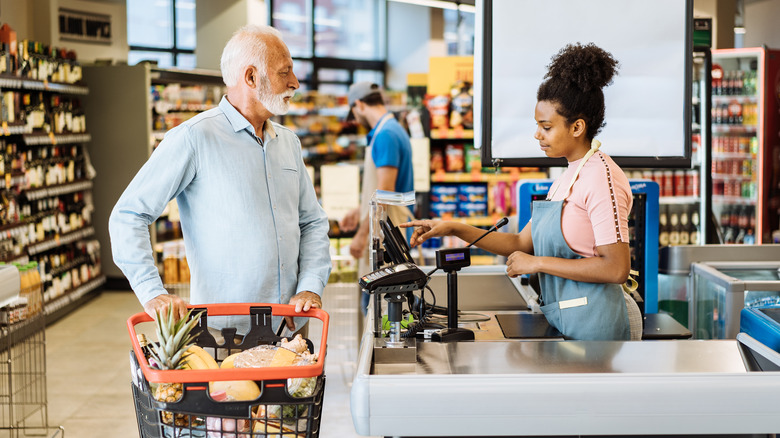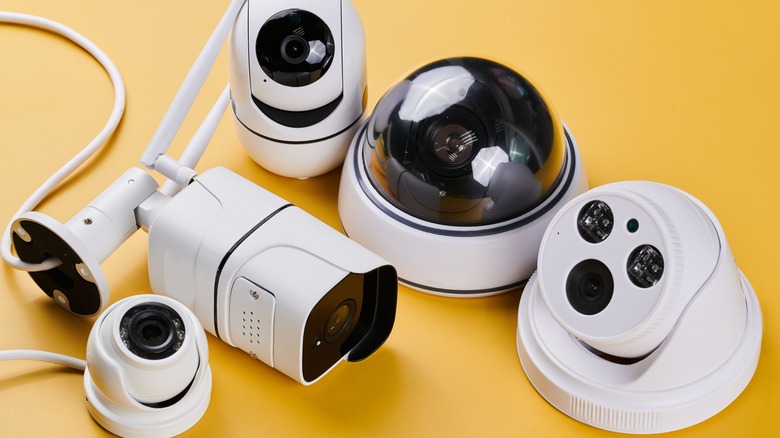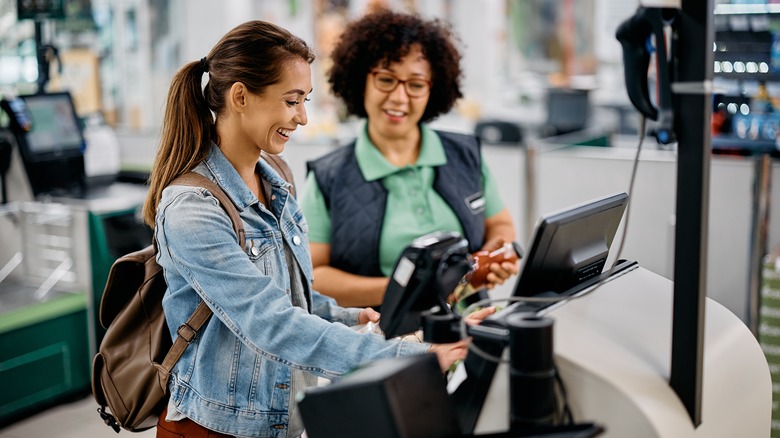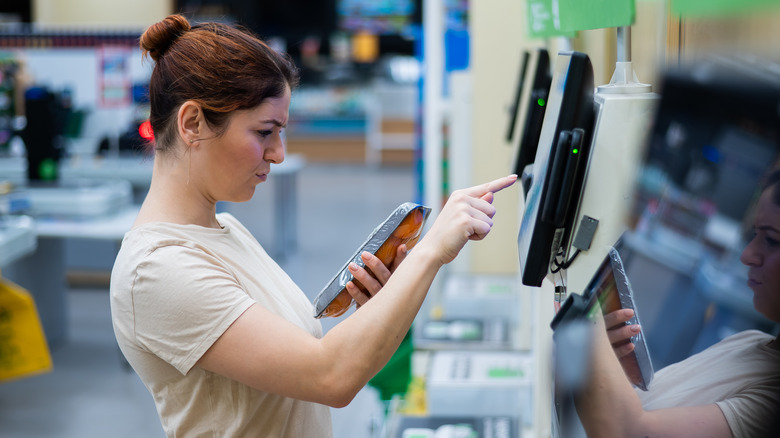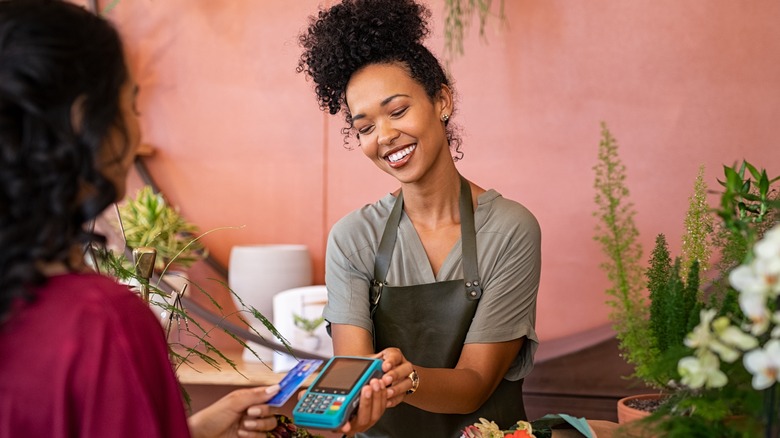The Self-Checkout Experiment Failed - It's Time To Move On
It's a global problem, and like many other worldwide issues it's spreading fast. You'll notice them in stores and supermarkets around the world, blinking at you, judging you, and placing an unnecessary burden on your shopping trip. I'm talking about self-service checkouts — a dystopian innovation that costs jobs, shifts responsibility onto the consumer, and serves as a startling example of how companies are happy to inconvenience people if it serves their bottom line.
Not all self-checkout solutions are terrible. A "just walk out" system pioneered by Amazon allows customers to scan items as they pick them off the shelves and walk straight out the door afterwards. This shares some issues with self-checkout, but the benefits outweigh the extra burden. As for the standard self-checkout systems, there's an argument that they are also streamlined and efficient compared to a traditional till. The machines take up less space, and require fewer staff, but various factors mean they aren't as efficient for the customer as they may seem at first.
I'm not the only one with a grievance. A recent Tasting Table survey indicated that a good number of our readers agree with me — citing constant errors, issues with the payment system, and bagging woes amongst their biggest gripes with self-checkouts. The reasons to hate these things go beyond the ones our readers identified with, and these days I avoid them at all costs. Here's why:
They make life more difficult
Self-checkout machines don't do any labor themselves. They're essentially a barcode scanner, a payment machine, and a scale stuck together to allow customers to scan and pay for their own groceries while not stealing anything. So what happens to the labor usually provided by the cashier? That burden shifts to you, the customer. You have to remove everything from your cart, scan it, and place it in a weighted area before finally paying and bagging it up. It's a tedious process that people paying for groceries used to be able to avoid. Then, there are the inevitable issues with scanning and bugs with the machines themselves, which make the whole process a huge pain.
While it may save you a little time if you only have one or two items, putting an entire weekly shop through one of these contraptions is a major inconvenience. You can pitch in and help on a traditional checkout, splitting the load with an employee. At self-checkout, you are responsible for unpacking, scanning, and bagging it all up again.
A high amount of scanning almost always guarantees some problems. Then, when the items are scanned, there's the issue of space. The weighted anti-theft platform, on the other side, isn't particularly big and fills up all too soon. Add in any potential payment problems, like the machine not taking cash, and there's even more of an issue. So, life is a lot easier if you stick to traditional checkouts.
Self-checkouts put people out of work
It's pretty obvious that self-checkouts cost jobs. Instead of one member of staff per checkout, a store can instead have a single employee supervising multiple self-checkout counters and assisting as needed. One staff member can manage between six and 10 self-checkouts, as opposed to the one or two staff members per checkout for a traditional setup. In simple terms, this can significantly reduce the number of staff needed at the checkout stage if a single employee is keeping an eye on 10 self-checkouts. Automation in the retail sector is an inevitability, but consumers should be wary of what they allow.
According to a study by the University of Leicester, self-checkout systems more than double the rate of theft in stores. However, as supermarkets still insist on using them, the savings being made from staff reductions must greatly outweigh the losses incurred from additional thefts.
In a world of increased automation, we need to look at who is being replaced and who ultimately benefits from any savings made by that replacement. As work shifts to the consumer, there is arguably no benefit there. Prices don't seem to have dropped either, so all of the benefits seem to be going to the store's shareholders while everyone else involved suffers. A loss of jobs hurts individuals, hurts the economy, and ultimately hurts everyone. Customers should vote with their wallets and protect staff by boycotting self-checkouts.
It jams a camera up your nostril
Shoplifting happens, and "losses" are factored into a store's margins. Self-checkouts make shoplifting in all its forms more likely, yet that's a cost passed on to the shopper. Still, running a grocery store has tight margins. In a bid to combat shoplifting, stores tend to be a little invasive.
In addition to the scale that makes sure your final grocery pile matches the total weight on the platform and, of course, the store employee keeping an eye on everything, there are cameras. Cameras aren't unheard of in grocery stores, but it's fair to feel uncomfortable about the degree to which you are not only being watched — but recorded. The self-checkout cameras are another way a store can watch and scrutinize. This doesn't eliminate thefts; it just makes the consumer feel like a suspect — even if they're just there to buy a tin of peaches. Often, abuse of personal data obtained through surveillance technologies disproportionately impacts populations of color. Rampant privacy violations that already exist aren't a green light for supermarkets to take things even further, and if a new system relies on further violating customer privacy, then it shouldn't even be considered.
Yes, when we enter the store, we see signs about the cameras. By not immediately turning around, we're consenting to be filmed. But that doesn't mean we have to be happy about it, and it certainly doesn't mean we should use a checkout that arguably takes things too far.
You need to wait for assistance half the time anyway
Stores have one assistant manning multiple self-service checkouts, which is the system's main selling point. However, that staff member will have busy periods, which could cause the system to become the most inconvenient thing in the entire shopping universe. The staff in question are doing more than keeping an eye out for shoplifters; they have to do their best to make sure the checkout process goes as smoothly as possible for everyone. To start with, there are pre-determined points when an employee will have to assist a customer.
This includes the employee verifying ID and then entering a special code when an age-restricted product is being purchased. So if you're buying a knife, certain aerosol sprays, or alcohol — expect some delays. Then there are times when a product won't scan properly or a mistake has been made that the assistant has to correct. These problems can happen simultaneously, and everything on an affected self-checkout pauses until it has been fixed by an employee.
During peak times, a couple of common issues might lead to long delays at the self-checkout line, stressing out customers and the overworked employee responsible for handling things. Even if other employees jump in to get things going again, the potential for self-checkout catastrophe is always high.
They're always broken
Errors and employee overload aren't the only things that can cause huge delays in the self-service section. I'm not a supermarket designer, so I don't know exactly what goes into choosing how many self-checkout stations will be installed at a particular location, but it seems fairly obvious that a location will put in enough to cope with expected demand during peak hours, while not going totally overboard and wasting money. Smart people probably do plenty of calculations involving various considerations in an effort to find that perfect number.
Unfortunately, even if they're using rough numbers and have implemented a bit of a buffer zone, a 50% reduction in functional machines will certainly throw a wrench in the works. These things seem to break down all the time, and sometimes, it seems like you'll rarely see a store with all of its machines in full working order. This leads to further delays in what is probably considered a streamlined checkout process. If a store had particularly bad luck, it might lead to large lines — even during relatively quiet hours.
There's a cold absence of human interaction
This point may seem a bit soppy, but I feel it's relevant. Humans are social animals. It's what helped us band together against predators when we were still running around naked and hurling rocks at stuff. Without social interaction, there wouldn't be civilization. However, in the past couple of decades, people have become increasingly isolated. This process went into overdrive during the coronavirus pandemic, when people avoided each other in the interests of public health.
Self-checkouts appeared before all that but were arguably ideal for the situation. However, as we return to normal times, they should probably be ditched along with many other measures we're now rid of. No matter how isolated anyone was, most of us could be guaranteed a brief conversation with a cashier a few times a week — and that's better than nothing. Taking this away, as small and simple a thing as it is, is just a further slip toward the disconnected dystopian universe that science fiction has been trying to warn us about for a century.
